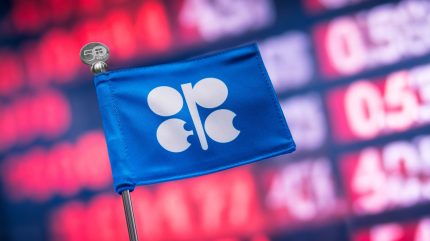
The Organization of the Petroleum Exporting Countries (OPEC) and its allies, known as OPEC+, have agreed to maintain oil output reductions until 2025, reported Reuters.
OPEC+ aims to stabilise the market amid concerns over slow demand growth, high interest rates and increasing US production.
Recently, Brent crude has been trading near $80 per barrel, below the budgetary breakeven point for several OPEC+ nations.
It has been impacted by concerns of sluggish demand growth, particularly from China, the world’s leading oil importer.
Additionally, rising oil inventories in developed economies have exerted downward pressure on prices.
Since late 2022, OPEC+ has implemented a series of substantial output reductions.

US Tariffs are shifting - will you react or anticipate?
Don’t let policy changes catch you off guard. Stay proactive with real-time data and expert analysis.
By GlobalDataThe current curtailment stands at 5.86mbbl/d, approximately 5.7% of global demand.
This includes 3.66mbbl/d due to end by late 2024 and additional voluntary reductions by eight members amounting to 2.2mbbl/d, initially set to expire by the end of June 2024.
In a recent meeting, OPEC+ resolved to extend the 3.66mbbl/d cuts until the end of 2025 and the 2.2mbbl/d cuts until September 2024.
Furthermore, the group plans to phase out the 2.2mbbl/d cuts over a year, starting from October 2024.
Following the meeting, Saudi Energy Minister Prince Abdulaziz bin Salman commented: “We are waiting for interest rates to come down and a better trajectory when it comes to economic growth … not pockets of growth here and there.”
OPEC forecasts demand for its crude to average 43.65mbbl/d in the latter half of 2024, which would lead to a stock drawdown of 2.63mbbl/d if the output remains at April’s levels.
The unwinding of the voluntary cuts will begin in October, which will lessen the stock drawdown.
Abdulaziz noted that OPEC+ might halt the easing of cuts or even reinstate them if the demand does not meet expectations.
Last month, the International Energy Agency revised its oil demand growth forecast for 2024 downwards, suggesting weaker global demand than previously estimated.


